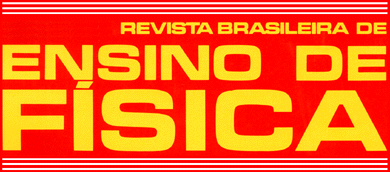Resumo em Português:
Este trabalho constitui os primeiros esforços em apresentar ao público de língua portuguesa uma nova ferramenta, com potencial uso clínico, para estudar propriedades mecânicas de materiais e tecidos vivos. Busca-se apresentar propostas de exploração de modalidades de aquisição e processamento de imagens por ressonância magnética (IRM). A Elastografia por Ressonância Magnética (ERM) é um novo procedimento que permite a medição in vivo dos parâmetros viscoelásticos dos tecidos, e que se encontra atualmente em fase de pesquisa. Ela baseia-se na Tomografia de Ressonância Magnética (TRM) e não usa radiação inonizante, tal como raios-X que poderiam causar dano ao tecido. A técnica de ERM funciona introduzindo-se ondas mecânicas periódicas na superfície do tecido, utilizando um atuador para excitar o meio. A introdução da onda mecânica senoidal no tecido leva a uma vibração periódica forçada, e as medições feitas pela TRM são sincronizadas com esta onda mecânica. Dessa forma é possível aumentar o contraste da imagem, que é proporcional à amplitude da onda. Assim, a tomografia por ressonância magnética funciona como uma "câmara estroboscópica" que permite a criação de um "instantâneo" da onda mecânica no tecido, sendo que a propagação de uma onda contínua pode ser utilizada para produzir um filme, tendo uma série de instantâneos em intervalos diferentes. As imagens de deslocamento de fase resultantes da propagação das ondas, através do meio, são obtidas utilizando o método de contraste de fase da técnica de imagem por RM. Estas mudanças de fase constituem a fundamentação para a posterior reconstrução dos parâmetros elásticos, que são representados por uma imagem chamada elastograma. Essa nova metodologia quantitativa e não-invasiva de propriedades elásticas de tecidos permite auxiliar os radiologistas nas decisões de diagnósticos corroborando com informações já existentes.
Resumo em Inglês:
This work is the first effort to introduce in the Portuguese language a tool to study the mechanical properties of materials and living tissues with potential clinical applications. We seek to present proposals for the exploration of new methods of acquisition and processing of images generated by Magnetic Resonance Imaging (MRI) systems. Magnetic Resonance Elastography (MRE) is a new procedure that allows in-vivo measurement of the viscoelastic parameters of tissues, which is still in the research stage. Since it is based on Magnetic Resonance Tomography (MRT), it does not use any potentially harmful X-ray radiation. The MRE technique works by introducing periodical mechanical waves on the tissue surface, and using an actuator to drive the medium. The introduction of the sinusoidal mechanical wave into the tissue leads to a periodic forced vibration. Triggering the MRT measurements with this mechanical wave it is then leads to an enhancement of the image contrast, which is proportional to the wave property. Thus, magnetic resonance tomography works as a "stroboscopic camera" by creating a "snapshot" of the mechanical wave within the tissue. A continuous propagation of the wave can be used to produce a movie by taking a number of snapshots at different intervals. Phase-shift imaging resulting from the propagation of waves through the tissue is obtained using a MR method of phase-contrast technique. These phase-shift imaging sequences form the foundation of the subsequent reconstruction of the elastic parameters, which are represented by an image called elastogram. This new methodology allows quantitative and noninvasive measurements of elastic properties of tissues to help radiologists into making precise diagnosis in order to confirm preexisting ones.
